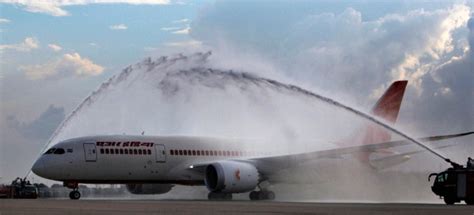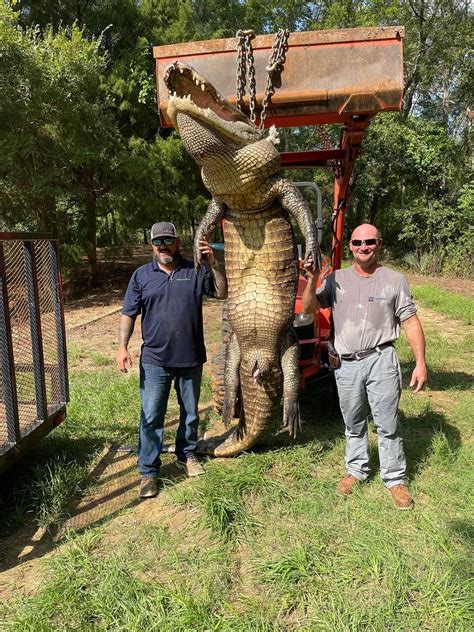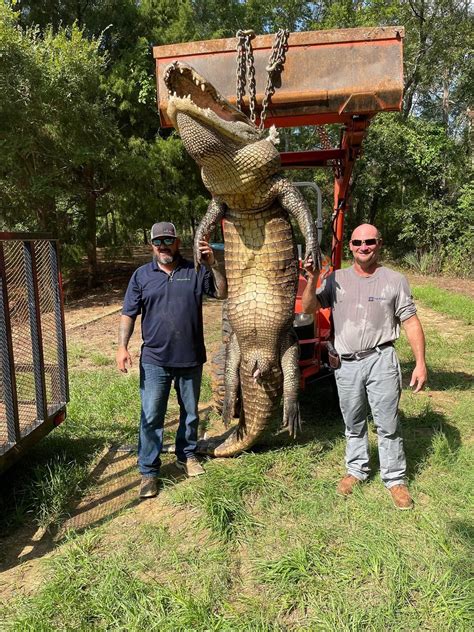
The Federal Aviation Administration (FAA) has grounded some Boeing 787 Dreamliner aircraft following an incident involving an Air India flight where a panel fell off mid-flight. The FAA is ordering a comprehensive safety review to investigate potential manufacturing flaws and ensure the structural integrity of the affected aircraft.
The FAA’s decision comes after an Air India 787-8 operating a domestic route experienced the detachment of a panel during flight. While the incident did not result in any injuries, it raised serious concerns about the manufacturing and maintenance procedures for these aircraft. The specific number of 787s affected remains undisclosed, but the FAA confirmed that the grounding impacts certain aircraft within the global fleet. The FAA stated it is “working with Boeing and affected airlines to address the issue.”
According to a statement released by the FAA, the review will focus on the manufacturing processes and quality control measures implemented during the production of the 787 Dreamliner. The FAA’s primary objective is to identify any potential systemic issues that could lead to further incidents involving panel detachment or other structural failures. The FAA also stated that it “is committed to ensuring the safety of the traveling public.”
Boeing acknowledged the FAA’s decision and stated that it is cooperating fully with the investigation. The company emphasized its commitment to safety and said it is working closely with the FAA and airlines to resolve the issue promptly. In a statement, Boeing said, “We are working closely with our customers and the FAA to address this issue. Safety is always our top priority, and we are committed to ensuring the highest levels of safety and quality in all our products.”
The grounding of the 787s is expected to cause some disruption to airline schedules, particularly on international routes where the Dreamliner is commonly used. Airlines operating the affected aircraft are working to minimize the impact on passengers by rebooking flights and utilizing alternative aircraft where possible.
The FAA’s safety review will involve a thorough examination of Boeing’s manufacturing records, quality control procedures, and maintenance protocols. The review will also assess the effectiveness of existing inspection and repair programs for the 787 Dreamliner. The FAA may issue further directives based on the findings of the review, including mandatory inspections, repairs, or modifications to affected aircraft.
The incident with the Air India 787-8 occurred on a domestic route, prompting an immediate internal investigation by the airline. Air India reported the incident to the FAA, which then initiated its review process. The airline also confirmed that it is working closely with Boeing and the FAA to ensure the safety of its 787 fleet.
The 787 Dreamliner is a technologically advanced aircraft known for its fuel efficiency and passenger comfort. However, it has faced several challenges since its introduction in 2011, including issues with its battery system that led to a global grounding in 2013. The current issue involving panel detachment raises renewed concerns about the manufacturing quality and structural integrity of the aircraft.
The FAA’s decision to ground some 787s and order a safety review reflects its commitment to proactive safety oversight. By addressing potential manufacturing flaws and ensuring the structural integrity of the aircraft, the FAA aims to prevent future incidents and maintain public confidence in air travel.
The grounding is also significant considering Boeing’s recent history. The company has faced intense scrutiny following two fatal crashes involving its 737 MAX aircraft, which led to a worldwide grounding and a series of investigations into Boeing’s safety culture and regulatory oversight. This latest incident involving the 787 Dreamliner adds to the pressure on Boeing to demonstrate its commitment to safety and quality.
The economic impact of the 787 grounding is expected to be significant, with airlines facing potential revenue losses due to flight cancellations and disruptions. Boeing may also incur costs related to the safety review, repairs, and potential modifications to the aircraft. The long-term impact on Boeing’s reputation remains to be seen, but the company will need to address the issue transparently and effectively to maintain the trust of its customers and the public.
The FAA is expected to provide regular updates on the progress of the safety review and any corrective actions taken. The agency’s priority is to ensure that the 787 Dreamliner meets the highest safety standards before it is returned to service. Airlines operating the affected aircraft are also committed to working with the FAA and Boeing to resolve the issue as quickly and safely as possible.
The incident underscores the importance of rigorous manufacturing standards, quality control procedures, and ongoing maintenance programs in the aviation industry. As aircraft become more complex and technologically advanced, it is essential to maintain a strong focus on safety and to address any potential issues proactively.
This situation serves as a reminder of the critical role that regulatory agencies like the FAA play in ensuring the safety of air travel. By conducting thorough investigations, issuing safety directives, and working closely with manufacturers and airlines, the FAA helps to maintain the highest levels of safety in the aviation industry.
The grounding of the Boeing 787 Dreamliner aircraft highlights the complexities and challenges involved in modern aviation. While the incident is concerning, it also demonstrates the industry’s commitment to safety and its ability to respond effectively to potential issues.
Detailed Background and Context:
The Boeing 787 Dreamliner, since its inception, has been hailed as a revolutionary aircraft, incorporating advanced materials like composites to enhance fuel efficiency and passenger comfort. Its development, however, was not without challenges. Delays in production, stemming from supply chain issues and technological complexities, plagued the program early on. These initial setbacks raised questions about Boeing’s ability to manage the intricate global supply chain required for the 787.
In 2013, the Dreamliner faced its first major crisis when issues with its lithium-ion batteries led to a global grounding. Multiple incidents of battery overheating and fires prompted the FAA and other regulatory agencies worldwide to suspend the aircraft’s operations. The crisis necessitated a redesign of the battery system, incorporating improved insulation, venting, and charging controls to prevent future incidents. This grounding served as a stark reminder of the importance of rigorous testing and validation of new technologies in aviation.
The current issue involving panel detachment adds another layer of complexity to the 787’s history. While the previous battery issue was related to a specific component, the panel detachment raises broader concerns about the manufacturing processes and structural integrity of the aircraft. The use of composite materials in the 787’s construction requires precise manufacturing techniques and stringent quality control measures to ensure the aircraft’s structural integrity.
The FAA’s decision to ground some 787s reflects a heightened level of scrutiny following the two fatal crashes involving the Boeing 737 MAX aircraft. Those crashes, which claimed the lives of 346 people, exposed significant flaws in Boeing’s safety culture and the FAA’s oversight processes. The investigations into the 737 MAX crashes revealed that Boeing had prioritized speed and cost savings over safety, and that the FAA had failed to adequately oversee the company’s activities.
The 737 MAX crisis led to a major shakeup at Boeing, with the ouster of its CEO and significant changes to its management structure. The company has since committed to improving its safety culture and strengthening its relationships with regulators. However, the latest incident involving the 787 Dreamliner suggests that Boeing still faces challenges in ensuring the quality and safety of its products.
The economic implications of the 787 grounding are considerable. Airlines that operate the Dreamliner rely on it for long-haul routes, and the grounding will disrupt their schedules and potentially lead to revenue losses. Boeing could face significant costs related to the safety review, repairs, and potential modifications to the aircraft. The grounding could also damage Boeing’s reputation and erode confidence in its products.
The FAA’s safety review will likely involve a thorough examination of Boeing’s manufacturing processes, quality control procedures, and maintenance protocols. The review will also assess the effectiveness of existing inspection and repair programs for the 787 Dreamliner. The FAA may issue further directives based on the findings of the review, including mandatory inspections, repairs, or modifications to affected aircraft.
The incident with the Air India 787-8 occurred on a domestic route, underscoring the potential for even seemingly minor incidents to have significant consequences. The airline’s prompt reporting of the incident to the FAA reflects a commitment to safety and transparency. However, the incident also raises questions about the adequacy of maintenance procedures and inspection programs for the 787 Dreamliner.
The 787 Dreamliner is a critical component of many airlines’ fleets, and its grounding will have a ripple effect throughout the aviation industry. Airlines will need to find alternative aircraft to operate their long-haul routes, which could lead to higher fares and reduced capacity. The grounding could also delay the introduction of new routes and services.
The FAA’s decision to ground some 787s and order a safety review reflects its commitment to proactive safety oversight. By addressing potential manufacturing flaws and ensuring the structural integrity of the aircraft, the FAA aims to prevent future incidents and maintain public confidence in air travel.
The grounding is also significant considering Boeing’s recent history. The company has faced intense scrutiny following two fatal crashes involving its 737 MAX aircraft, which led to a worldwide grounding and a series of investigations into Boeing’s safety culture and regulatory oversight. This latest incident involving the 787 Dreamliner adds to the pressure on Boeing to demonstrate its commitment to safety and quality.
The economic impact of the 787 grounding is expected to be significant, with airlines facing potential revenue losses due to flight cancellations and disruptions. Boeing may also incur costs related to the safety review, repairs, and potential modifications to the aircraft. The long-term impact on Boeing’s reputation remains to be seen, but the company will need to address the issue transparently and effectively to maintain the trust of its customers and the public.
Expanded Context and Analysis:
The grounding of the Boeing 787 Dreamliner is not just an isolated incident; it’s a symptom of deeper issues within the aviation industry and Boeing’s manufacturing processes. The incident highlights the increasing complexity of modern aircraft design and the challenges of maintaining stringent quality control standards in a globalized supply chain.
The 787 Dreamliner, with its extensive use of composite materials, represents a significant departure from traditional aluminum-based aircraft construction. While composites offer numerous advantages, including lighter weight and improved fuel efficiency, they also require specialized manufacturing techniques and inspection methods. The panel detachment incident suggests that there may be weaknesses in the manufacturing process or the inspection protocols for these composite components.
The FAA’s safety review will likely focus on several key areas, including:
- Manufacturing Processes: A thorough examination of Boeing’s manufacturing facilities and those of its suppliers to identify any potential flaws in the production process.
- Quality Control Procedures: An assessment of the quality control measures implemented at each stage of the manufacturing process, from raw materials to final assembly.
- Inspection and Maintenance Programs: A review of the inspection and maintenance programs for the 787 Dreamliner to ensure that they are effective in detecting and addressing potential issues.
- Design and Engineering: An evaluation of the design and engineering of the 787 Dreamliner to identify any potential structural weaknesses or vulnerabilities.
The FAA will also likely consult with experts in materials science, manufacturing, and aviation safety to gain a comprehensive understanding of the issue. The agency may also request input from airlines that operate the 787 Dreamliner to gather information about their experiences with the aircraft.
The grounding of the 787 Dreamliner is a reminder of the importance of continuous improvement in aviation safety. As aircraft become more complex and technologically advanced, it is essential to invest in research and development to improve manufacturing processes, inspection methods, and maintenance programs. It is also crucial to foster a strong safety culture within the aviation industry, where safety is always the top priority.
Boeing’s response to the 787 Dreamliner grounding will be closely watched by the aviation industry and the public. The company needs to demonstrate that it is taking the issue seriously and that it is committed to addressing the underlying causes of the panel detachment incident. Boeing must also be transparent in its communications with regulators, airlines, and the public.
The long-term impact of the 787 Dreamliner grounding on Boeing’s reputation remains to be seen. However, the company can mitigate the damage by taking swift and decisive action to address the issue and by demonstrating its commitment to safety and quality.
Frequently Asked Questions (FAQ):
Q1: Why did the FAA ground some Boeing 787 Dreamliner aircraft?
A1: The FAA grounded some Boeing 787 Dreamliner aircraft after an incident involving an Air India flight where a panel fell off mid-flight. The FAA is ordering a comprehensive safety review to investigate potential manufacturing flaws and ensure the structural integrity of the affected aircraft.
Q2: What will the FAA’s safety review involve?
A2: The FAA’s safety review will involve a thorough examination of Boeing’s manufacturing records, quality control procedures, and maintenance protocols. The review will also assess the effectiveness of existing inspection and repair programs for the 787 Dreamliner. The FAA may issue further directives based on the findings of the review, including mandatory inspections, repairs, or modifications to affected aircraft.
Q3: How many aircraft are affected by the grounding?
A3: The specific number of 787s affected remains undisclosed, but the FAA confirmed that the grounding impacts certain aircraft within the global fleet. The FAA is “working with Boeing and affected airlines to address the issue.”
Q4: What is Boeing’s response to the grounding?
A4: Boeing acknowledged the FAA’s decision and stated that it is cooperating fully with the investigation. The company emphasized its commitment to safety and said it is working closely with the FAA and airlines to resolve the issue promptly. “We are working closely with our customers and the FAA to address this issue. Safety is always our top priority, and we are committed to ensuring the highest levels of safety and quality in all our products,” Boeing stated.
Q5: What impact will the grounding have on airline schedules and passengers?
A5: The grounding of the 787s is expected to cause some disruption to airline schedules, particularly on international routes where the Dreamliner is commonly used. Airlines operating the affected aircraft are working to minimize the impact on passengers by rebooking flights and utilizing alternative aircraft where possible.
Q6: Was anyone hurt during the Air India panel detachment incident?
A6: No, the panel detachment incident on the Air India flight did not result in any injuries.
Q7: What specific part of the Air India 787-8 detached?
A7: While the article specifies that a “panel” detached, it does not detail the specific location or function of the panel.
Q8: What is the significance of the 787 Dreamliner using composite materials?
A8: The 787 Dreamliner’s extensive use of composite materials is a significant departure from traditional aluminum-based aircraft construction. While composites offer advantages like lighter weight and improved fuel efficiency, they require specialized manufacturing techniques and inspection methods. The panel detachment incident suggests potential weaknesses in these areas.
Q9: How does this 787 grounding compare to the 737 MAX grounding?
A9: While both involved Boeing aircraft and FAA intervention, the 737 MAX grounding was triggered by two fatal crashes and revealed systemic flaws in Boeing’s safety culture and FAA oversight. The 787 grounding, stemming from a panel detachment incident, is prompting a safety review focusing on manufacturing and quality control, but hasn’t involved any fatalities. Both events, however, underscore the need for rigorous safety standards.
Q10: What happens if the FAA finds significant issues during its safety review?
A10: If the FAA finds significant issues, it may issue further directives, including mandatory inspections, repairs, or modifications to affected aircraft. The FAA’s priority is to ensure that the 787 Dreamliner meets the highest safety standards before it is returned to service. This could potentially lengthen the grounding period and lead to further disruptions.
Q11: Has any other 787 experienced similar incidents?
A11: The article does not specify whether other 787 aircraft have experienced similar panel detachment incidents. The FAA’s safety review will aim to determine if the Air India incident was an isolated case or if there are systemic issues affecting the broader 787 fleet.
Q12: How long is the grounding expected to last?
A12: The duration of the grounding is currently unknown. It depends on the findings of the FAA’s safety review and the time required to implement any necessary corrective actions. The FAA will likely provide updates on the progress of the review and the expected timeline for returning the aircraft to service.
Q13: Will passengers be compensated for flight disruptions caused by the grounding?
A13: Compensation for flight disruptions will depend on the airline’s policies and the specific circumstances of the disruption. Passengers should contact their airline to inquire about their options for rebooking, refunds, or compensation.
Q14: What role does the NTSB (National Transportation Safety Board) play in this situation?
A14: While the FAA is taking the lead in the safety review and grounding decision, the NTSB may also be involved in the investigation, particularly if the FAA identifies potential safety deficiencies that warrant further scrutiny. The NTSB typically investigates significant aviation incidents to determine the probable cause and to issue safety recommendations.
Q15: How does this incident affect public confidence in air travel?
A15: Any incident that raises concerns about the safety of aircraft can erode public confidence in air travel. The FAA’s proactive response to the panel detachment incident, including the grounding of some 787s and the ordering of a safety review, is intended to reassure the public that the agency is taking steps to address potential safety issues and to maintain the highest levels of safety in the aviation industry.
Q16: Will airlines be required to implement new inspection procedures as a result of this incident?
A16: That is a possibility, and it depends on the FAA’s safety review. The FAA may mandate more frequent or more detailed inspections of the 787 Dreamliner’s panels and other structural components. Airlines may also be required to enhance their training programs for maintenance personnel to ensure that they are properly equipped to identify and address potential issues.
Q17: What is the FAA’s role in ensuring the safety of aircraft manufacturing?
A17: The FAA has a crucial role in ensuring the safety of aircraft manufacturing. The agency oversees the design, production, and maintenance of aircraft to ensure that they meet strict safety standards. The FAA also conducts inspections of manufacturing facilities and audits of quality control procedures.
Q18: Is this grounding specific to Air India’s 787s, or does it affect other airlines?
A18: The grounding affects certain 787 Dreamliner aircraft within the global fleet, not just those operated by Air India. The FAA is working with all affected airlines to address the issue.
Q19: What are composite materials and why are they used in the 787 Dreamliner?
A19: Composite materials are materials made from two or more constituent materials with significantly different physical or chemical properties that, when combined, produce a material with characteristics different from the individual components. In the 787 Dreamliner, composites like carbon fiber reinforced polymers are used because they are lighter than traditional aluminum alloys, leading to improved fuel efficiency.
Q20: What measures are being taken to prevent similar incidents from happening in the future?
A20: The FAA’s safety review is the primary measure being taken to prevent similar incidents. The review will identify the root causes of the panel detachment incident and will lead to corrective actions, such as improved manufacturing processes, enhanced inspection procedures, or design modifications. The FAA and Boeing are also committed to working together to improve safety culture and oversight.


![Massive Motorcycle Recall: [Manufacturer] Pulls Back Nearly 100K Bikes!](https://generasitekno.com/wp-content/uploads/2025/06/unnamed-file-727-150x150.jpg)






